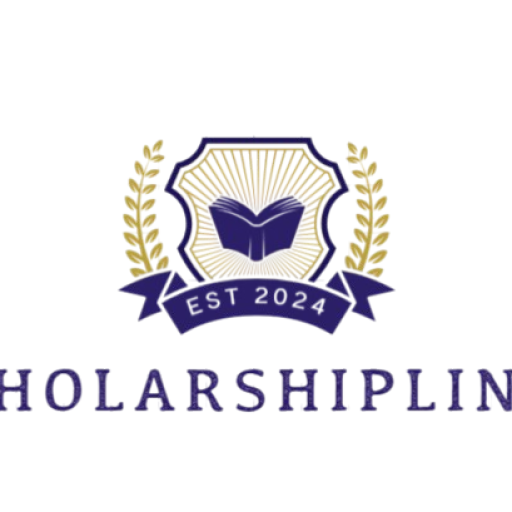The Ultimate Guide to Creating a Winning Scholarship Application. Securing a scholarship can be a game-changer for your educational journey, opening doors to opportunities you may have thought were out of reach. But with so many students competing for the same scholarships, how do you make your application stand out? In this ultimate guide, we’ll walk you through the key steps to creating a winning scholarship application that gives you the best shot at success.
Why a Strong Scholarship Application Matters
A well-prepared scholarship application is more than just filling out forms and submitting documents. It’s your chance to showcase your achievements, ambitions, and potential to a selection committee that has the power to invest in your future. The goal is to present a compelling case that you are the most deserving candidate for the award.
Key Elements of a Winning Scholarship Application
1. Research Scholarships Thoroughly
Before you even start your application, it’s crucial to find the right scholarships that match your profile and aspirations. Researching thoroughly ensures you’re not wasting time on awards that don’t fit your needs or qualifications.
Tips:
- Use scholarship search engines to filter opportunities by your field of study, location, eligibility criteria, and other factors.
- Look into local organizations, universities, and companies that might offer scholarships for students in your area or with your specific skill set.
- Keep a list of all potential scholarships, including their deadlines, requirements, and application links.
2. Understand the Requirements and Criteria
Each scholarship has specific eligibility criteria and application requirements that you need to meet. Ignoring these details could result in automatic disqualification.
Tips:
- Read the instructions carefully and ensure you meet all the eligibility requirements.
- Make note of all the documents you need to prepare, such as transcripts, recommendation letters, essays, and proof of achievements.
- Pay attention to word count limits, formatting guidelines, and any other specific details requested.
3. Create a Compelling Personal Statement
A personal statement is your opportunity to tell your story and convince the committee why you deserve the scholarship. This is often the most important part of the application, so make it count!
Tips:
- Highlight your goals, achievements, and what motivates you in your academic journey.
- Explain how the scholarship will help you achieve your future aspirations.
- Use a clear, concise, and engaging writing style to keep the reader interested.
4. Gather Strong Letters of Recommendation
Most scholarship applications require letters of recommendation from teachers, mentors, or professionals who know you well. These letters should highlight your strengths, skills, and character.
Tips:
- Choose recommenders who can provide specific examples of your abilities and achievements.
- Give them plenty of notice and provide them with your resume, personal statement, and details about the scholarship to help them write a tailored letter.
- Thank your recommenders for their support and keep them updated on the outcome.
5. Highlight Your Achievements and Extracurricular Activities
Committees look for well-rounded candidates who excel not only academically but also in extracurricular activities, leadership roles, and community service. Make sure to showcase these areas in your application.
Tips:
- Include your participation in clubs, sports, volunteer work, internships, and leadership roles.
- Emphasize achievements that relate directly to the scholarship’s focus or values.
- Use specific examples to demonstrate your commitment and impact in these activities.
6. Perfect Your Academic Resume
An academic resume is different from a standard resume; it focuses on your educational achievements, honors, skills, and relevant experience. This is your chance to present a summary of your qualifications in an organized way.
Tips:
- Include details about your GPA, courses taken, academic honors, and relevant projects.
- List your extracurricular activities, leadership roles, work experience, and volunteer work.
- Use action words to describe your responsibilities and achievements.
7. Write a Stand-Out Scholarship Essay
The scholarship essay is often the deciding factor between equally qualified candidates. It’s essential to write an essay that not only answers the prompt but also engages the reader and shows your personality.
Tips:
- Begin with a strong hook that captures attention and clearly states your main idea.
- Stay focused on the topic and provide specific examples to support your arguments.
- Edit and revise your essay multiple times to ensure it is free from errors and flows smoothly.
8. Proofread and Edit Everything Thoroughly
One of the biggest mistakes students make is submitting their applications without thorough proofreading. Spelling and grammar mistakes can hurt your chances and leave a negative impression.
Tips:
- Review your application multiple times and use grammar-checking tools to catch any errors.
- Ask a friend, family member, or teacher to review your application and provide feedback.
- Make sure all the documents are complete, well-organized, and formatted correctly.
Common Mistakes to Avoid in Scholarship Applications
- Missing Deadlines: Submit your application well before the deadline to avoid any last-minute issues.
- Submitting Generic Essays: Tailor each essay to the specific scholarship you are applying for instead of using a one-size-fits-all approach.
- Ignoring Guidelines: Not following instructions or guidelines can lead to disqualification, even if you have a strong application.
- Overlooking Required Documents: Ensure that you include all necessary documents, such as transcripts, recommendation letters, and proof of eligibility.
Final Tips for a Winning Scholarship Application
- Start Early: Give yourself enough time to prepare a thoughtful and well-organized application.
- Stay Organized: Use a calendar to keep track of deadlines and set reminders to avoid last-minute stress.
- Be Confident: Believe in your achievements and present yourself confidently in your application.
- Follow Up: If the scholarship allows it, follow up with the committee to check on the status of your application.
Example of a Strong Personal Statement Opening
Weak Example:
“I want to apply for this scholarship because I need money to pay for my education.”
Strong Example:
“Growing up in a low-income neighborhood, I witnessed firsthand the impact of limited educational opportunities. It is my mission to break this cycle and use my education to create change in my community. This scholarship will enable me to gain the skills and knowledge I need to turn this vision into reality.”
Conclusion
Creating a winning scholarship application takes careful planning, attention to detail, and a commitment to showcasing your best self. By following these tips and strategies, you can develop a compelling application that highlights your achievements, goals, and potential, giving you the best chance at securing the financial support you need to achieve your educational dreams.
FAQs
- How long should a personal statement be for a scholarship application? Most personal statements range from 500 to 1,000 words, depending on the guidelines set by the scholarship provider.
- Can I reuse my personal statement for multiple scholarships? Yes, but make sure to customize it to fit each specific scholarship’s criteria and values.
- How do I choose the best recommenders for my scholarship application? Choose people who know your academic abilities, character, and work ethic well, such as teachers, mentors, or employers.
- What should I include in my academic resume for a scholarship application? Include your academic achievements, relevant coursework, extracurricular activities, leadership roles, and any awards or honors.
- How important is proofreading my scholarship application? Proofreading is essential as it shows attention to detail and professionalism. A mistake-free application is more likely to make a positive impression.
By following this ultimate guide, you can create a scholarship application that not only meets the requirements but also shines with your unique qualities and achievements. Best of luck with your scholarship journey!


